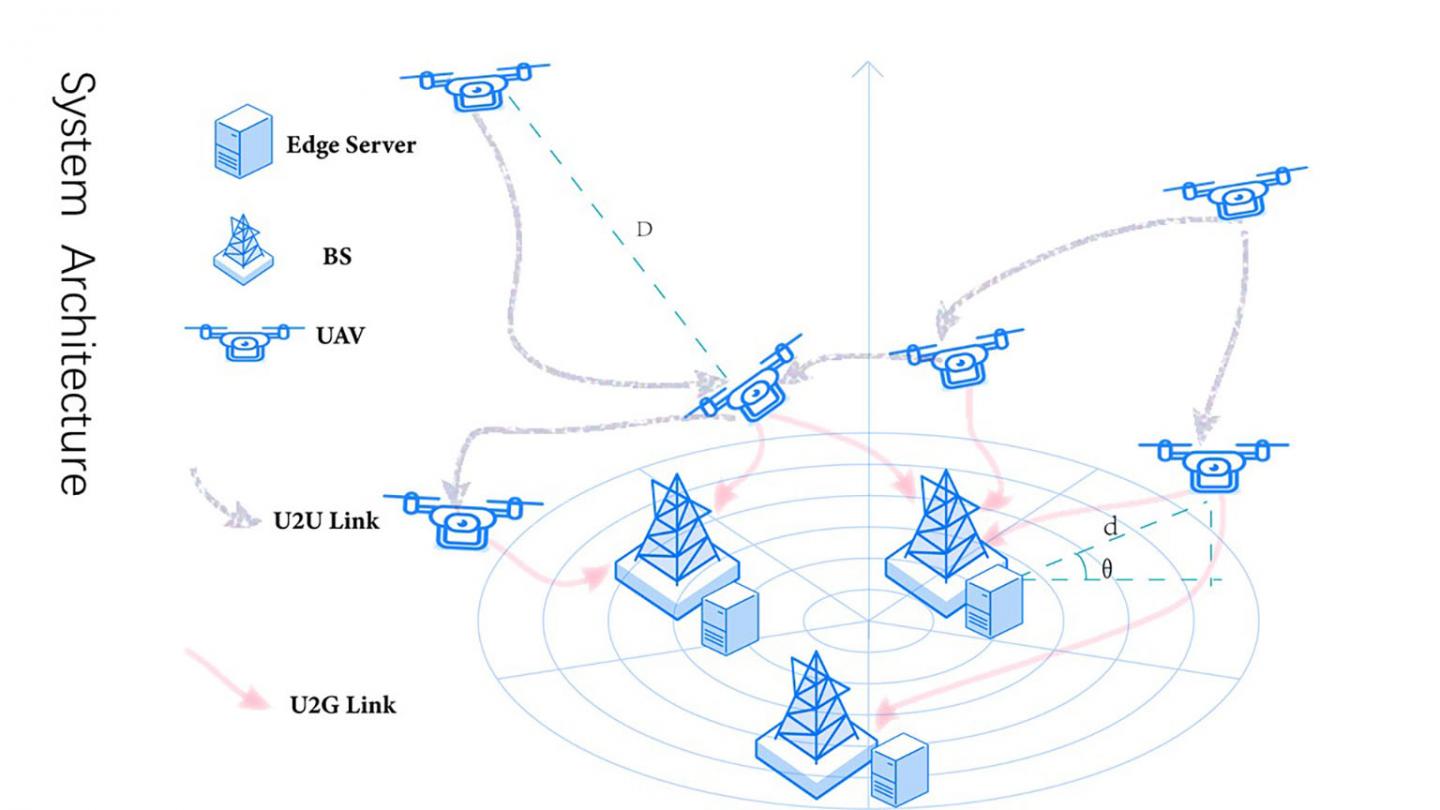In a twist on survival of the fittest, new research in UAV swarms applies genetic algorithms to maximize not individual but whole swarm working lifetime

Credit: Wuhui Chen
WASHINGTON, D.C., June 11, 2019 — A new energy-efficient data routing algorithm developed by an international team could keep unmanned aerial vehicle swarms flying — and helping — longer, report an international team of researchers this month in the journal Chaos, from AIP Publishing.
UAV swarms are cooperative, intercommunicating groups of UAVs used for a wide and growing variety of civilian and military applications. In disaster response, particularly when local communications infrastructure is destroyed, UAV swarms linked to one or more local base stations act as eyes in the sky, providing first responders with crucial damage and survivor information.
“The battery capacity of UAVs is a critical shortcoming that limits their usage in extended search and rescue missions,” said co-author Wuhui Chen, a researcher at China’s Sun Yat-Sen University.
Much of a UAV’s energy use can be related to high bandwidth and long transmission times — think of the drain on the battery of your phone in such cases. To address this, Chen and colleagues have developed a UAV swarm data routing algorithm that uses the strength of the group to maximize real-time transmission rates and minimize individual UAV battery challenges.
Their new hybrid computational approach combines linear programming and a genetic algorithm to create a “multi-hop” data routing algorithm. A genetic algorithm solves chaotic optimization problems using an analogue of natural selection, the process that drives biological evolution.
In real time, the new adaptive LP-based genetic algorithm (ALPBGA) identifies the lowest communications energy route within a swarm and simultaneously balances out individual UAV power use, for example, by determining which UAV will beam information to a base station.
“By balancing power consumption among the UAVs, we significantly enhance the ability of the whole system,” said Patrick Hung, a co-author at the University of Ontario Institute of Technology in Canada. “Our simulations show that our approach can outperform the existing state of the art methods.”
These computer simulations show that, especially as swarm size increases from 10 to hundreds of UAVs, ALPBGA reduces the number of UAVs that stop communicating by 30% to 75% compared to existing leading UAV swarm communication algorithms.
“We believe the results of our research will inspire others to design more energy-efficient UAV communication systems,” said Chen, who plans to extend the ALPBGA research to optimize it within the context of different swarm flying trajectories.
###
The article, “Energy-efficient data routing in cooperative UAV swarms for medical assistance after a disaster,” is authored by Yuanhao Yang, Xiaoyu Qiu, Shenghui Li, Junbo Wang, Wuhui Chen, Patrick C. K. Hung and Zibin Zheng. The article will appear in Chaos on June 11, 2019 (DOI: 10.1063/1.5092740). After that date, it can be accessed at https:/
ABOUT THE JOURNAL
Chaos is devoted to increasing the understanding of nonlinear phenomena in all disciplines and describing their manifestations in a manner comprehensible to researchers from a broad spectrum of disciplines. See http://chaos.
Media Contact
Larry Frum
[email protected]
Related Journal Article
http://dx.




